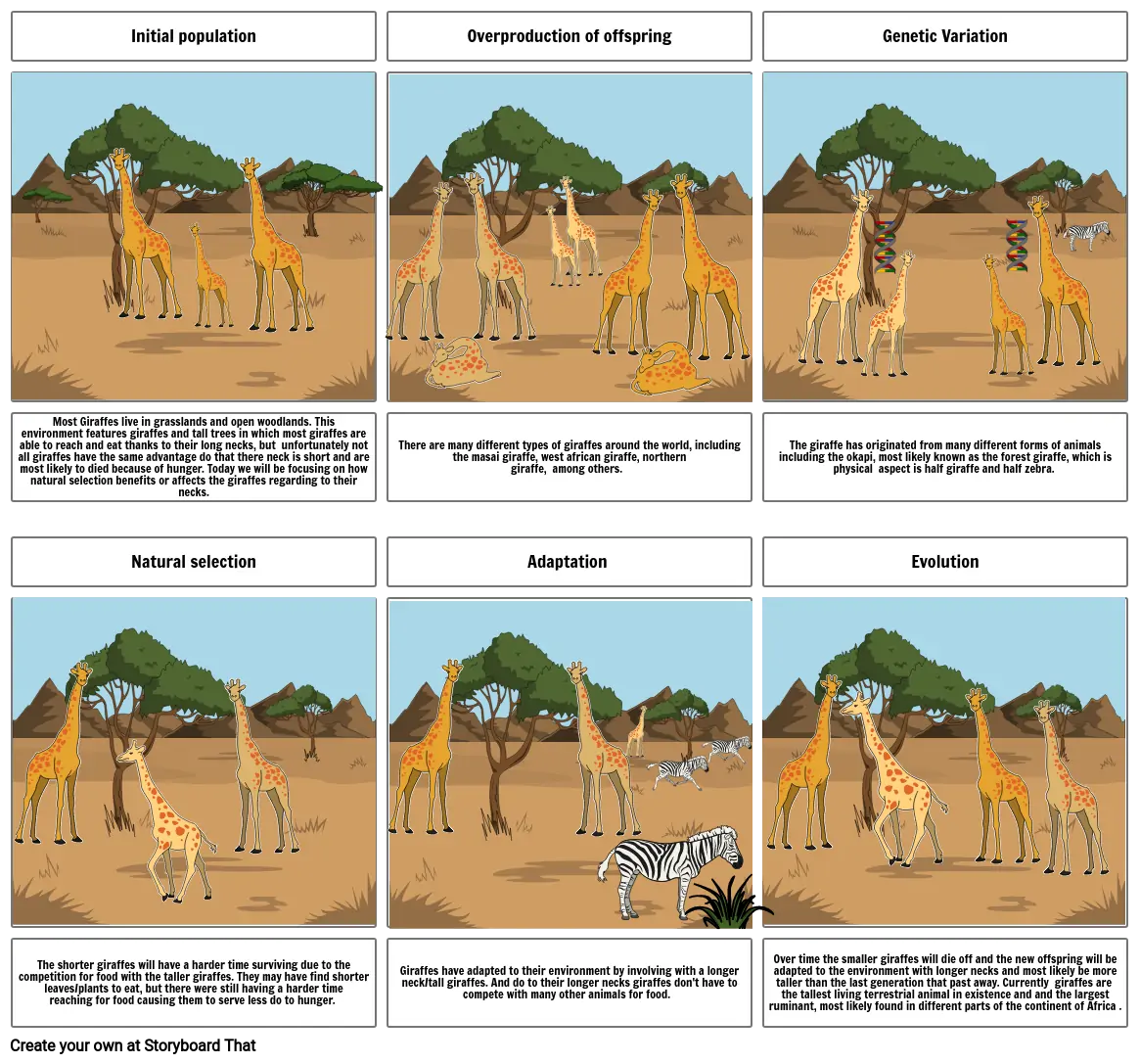Natural Selection - Giraffe

Storyboard Text
- Initial population
- Overproduction of offspring
- Genetic Variation
- Most Giraffes live in grasslands and open woodlands. This environment features giraffes and tall trees in which most giraffes are able to reach and eat thanks to their long necks, but unfortunately not all giraffes have the same advantage do that there neck is short and are most likely to died because of hunger. Today we will be focusing on how natural selection benefits or affects the giraffes regarding to their necks.
- Natural selection
- There are many different types of giraffes around the world, including the masai giraffe, west african giraffe, northern giraffe, among others.
- Adaptation
- The giraffe has originated from many different forms of animals including the okapi, most likely known as the forest giraffe, which is physical aspect is half giraffe and half zebra.
- Evolution
- The shorter giraffes will have a harder time surviving due to the competition for food with the taller giraffes. They may have find shorter leaves/plants to eat, but there were still having a harder time reaching for food causing them to serve less do to hunger.
- Giraffes have adapted to their environment by involving with a longer neck/tall giraffes. And do to their longer necks giraffes don't have to compete with many other animals for food.
- Over time the smaller giraffes will die off and the new offspring will be adapted to the environment with longer necks and most likely be more taller than the last generation that past away. Currently giraffes are the tallest living terrestrial animal in existence and and the largest ruminant, most likely found in different parts of the continent of Africa .
Over 30 Million Storyboards Created

